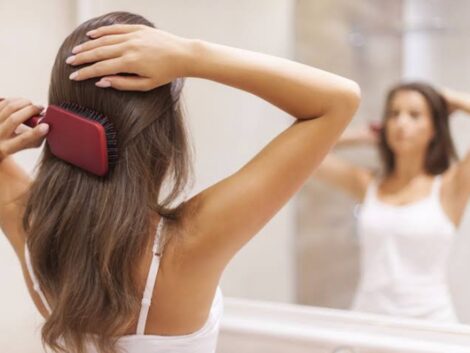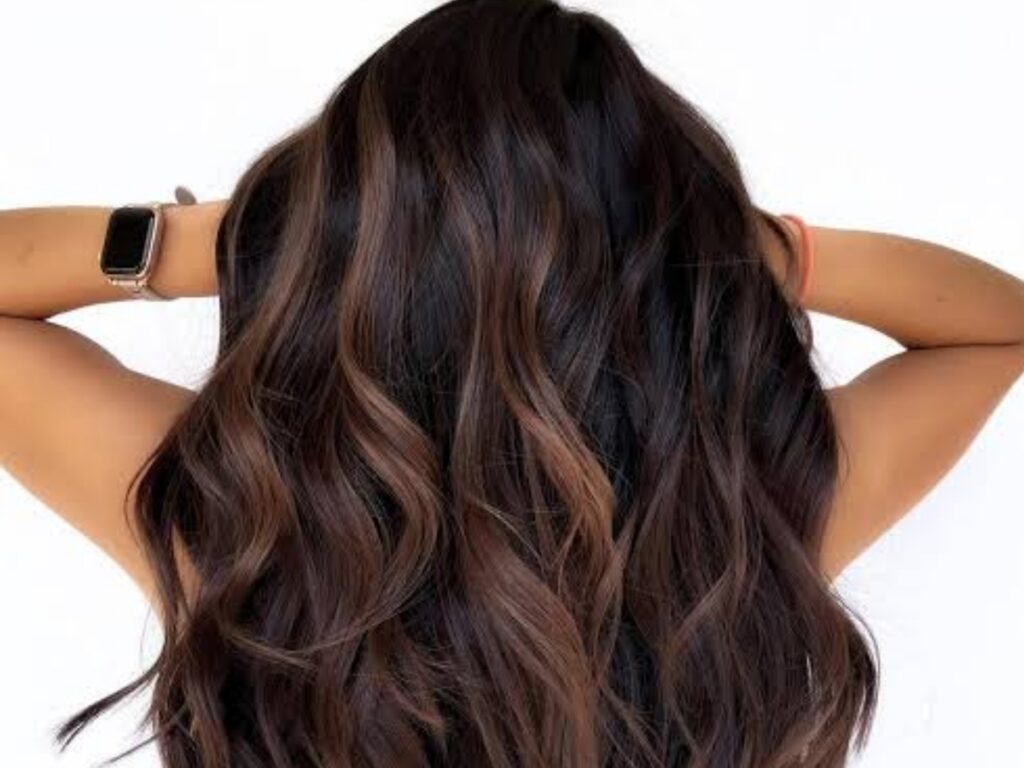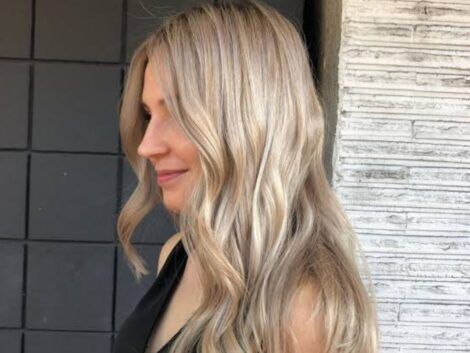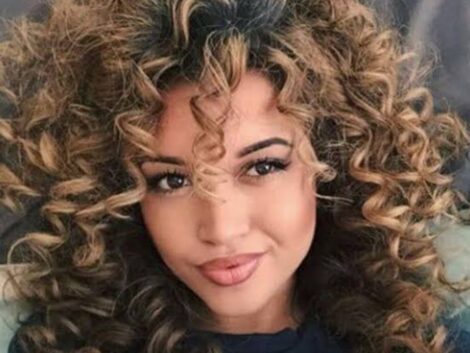When changing your hair color, you may often hear the terms “balayage” and “highlights” being mentioned. While both techniques can give you gorgeous, multi-dimensional locks, understanding the differences between balayage and highlights can help you choose which method suits your style and desired outcome.
Let’s explore the characteristics and benefits of each approach so you can make an informed decision on your next hair colour journey.
Balayage has gained significant recognition for its innumerable benefits and unique approach. It involves a freehand painting technique that creates a more natural and sun-kissed appearance. This method allows for a seamless blend of shades and tones, making it ideal for achieving a soft, lived-in look. Additionally, it requires less maintenance as it grows out more gracefully, reducing the need for frequent touch-ups. Moreover, as the color is applied in a sweeping motion rather than being saturated from root to tip, it places less stress on the hair, resulting in less damage and a healthier overall appearance.
Is balayage good or bad for your hair?
Balayage itself is not inherently good or bad for your hair. This hair colouring technique involves hand-painting highlights onto the hair, creating a natural, sun-kissed effect. Whether it is good or bad for your hair depends on various factors:
- Skill and experience of the hairstylist: Choosing a skilled and experienced stylist who knows how to properly perform the balayage technique is crucial. A poorly executed balayage can damage your hair.
- Bleaching process often involves lightening the hair through a bleaching process to create the desired colour. Bleaching can cause damage if not done carefully and with proper hair care techniques.
- Hair condition: If your hair is already damaged, weak, or over-processed, adding more chemical treatments like balayage may worsen it. It is essential to maintain the health of your hair before and after the balayage process through proper hair care routines.
- Haircare routine after balayage: To keep your hair healthy after getting balayage, you should follow a suitable hair care routine, including regular deep conditioning, using hair products designed for colored hair, minimizing heat styling, and protecting your hair from the sun.
It is recommended to consult with a professional hairstylist who can assess the condition of your hair and give you personalized advice regarding whether balayage is a suitable option for you.

What is the downside of balayage?
While balayage can create beautiful, natural-looking highlights, there are a few downsides to consider:
- Damage: Balayage often involves using bleach or lightening agents to achieve the desired effect. This can cause damage to your hair, making it more prone to breakage, dryness, and split ends.
- Maintenance: It requires regular touch-ups to maintain the desired look as your hair grows. This means more trips to the salon and potentially more exposure to chemical treatments, which can further damage your hair.
- Colour Variations: Since it involves hand-painting the highlights onto your hair, the colour results may not be uniform. This can lead to varying shades and tones throughout your hair, which may not be what you expected or desired.
- Cost: It can be quite expensive, especially if you opt for a salon professional to achieve the best results. Additionally, the need for regular touch-ups can add up, making it a costly and ongoing commitment.
It’s important to consult with a professional stylist to understand the potential risks and benefits of balayage and determine if it’s the right choice for your hair type and desired look.
What is the benefit of balayage vs traditional highlights?
Balayage & traditional highlights differ in how they are applied and the results they achieve. Here are some benefits compared to traditional highlights:
- Natural look: Balayage creates a more natural and sun-kissed effect compared to traditional highlights. The hand-painted technique allows for a softer transition from your base colour to the highlighted sections, mimicking the way the sun naturally lightens hair over time.
- Low maintenance: Balayage is a low-maintenance colouring technique. Since the highlights are strategically placed to blend seamlessly with your natural hair colour, they grow out gracefully and do not require frequent touch-ups. This makes balayage a great option for those who want a more low-maintenance hair colour.
- Versatility: Balayage can be customized to suit a wide range of hair lengths, textures, and colours. Whether you have short, long, straight, or curly hair, a skilled stylist can tailor the technique to create a customized and flattering look for you.
- Soft grow-out: Unlike traditional highlights, where the roots can become obvious as they grow out, balayage allows for a softer and more natural-looking regrowth. This means you can go longer between touch-ups without worrying about a harsh line of demarcation.
- Customization: Balayage offers more flexibility and creativity in achieving the desired look. Stylists can customize the placement, intensity, and tones of the highlights based on your preferences and facial features, resulting in a more personalized and flattering outcome.
Ultimately, the choice between balayage and traditional highlights depends on your personal preference, hair type, and desired result. Consulting with a professional stylist will help determine which technique is best suited to achieve your desired look.
Is balayage more damaging than highlights?
Balayage is generally less damaging than traditional highlights because it involves less processing and less direct contact with the scalp. Traditional highlights often require foils and bleaching techniques, which can lead to more damage and breakage. Conversely, Balayage selectively lightens the hair using a freehand painting technique, allowing for less overall hair damage.
However, it’s important to note that any colouring or lightening process can potentially cause damage, so proper care and maintenance are essential to keep your hair healthy and minimize any potential damage.

Is balayage a lot of upkeep?
Balayage generally requires less upkeep compared to other hair colouring techniques, such as traditional highlights. Since balayage involves hand-painting the colour onto specific sections of hair rather than saturating the entire hair shaft, the regrowth is more subtle. This means less noticeable lines of demarcation between the natural hair colour and the balayage highlights, resulting in less frequent touch-ups.
However, the specific upkeep required for balayage can vary depending on factors like the desired contrast, color, and natural hair tone. It is recommended to consult with a professional hair colorist to determine a maintenance plan that suits your needs and preferences.
Lastly, check out the mane caper shop.



